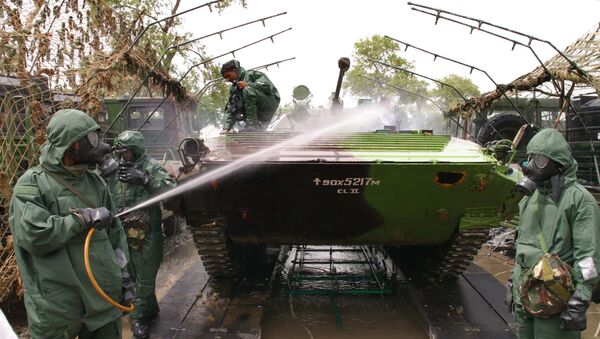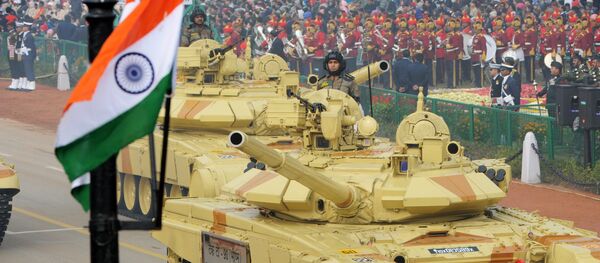"Although chemical weapons have been banned by the United Nations, it could be used by an adversary," Indian Army chief General Bipin Rawat said at an event where the Defense Research and Development Organization (DRDO) handed over the Nuclear, Biological, Chemical Reconnaissance Vehicle (NBCRV) and medicines to the Indian Army.
Earlier, India's Defense Minister Manohar Parrikar had also expressed concern over possible use of these weapons in a limited war. "In southern and northern parts of Afghanistan, I have seen photographs of local population suffering from blisters. At this moment, I don't have confirmation on this, but the photos were quite disturbing," Parrikar had said.
Meanwhile, the Indian Army has inducted NBCRV MK-1 which is developed by DRDO for carrying out post-event recce of nuclear, biological and chemical weapon contaminated areas. Army had placed an indent for 16 NBCRVs in May 2010.
Indian defense scientists are also undertaking research to develop an advanced CBRN Recce Vehicle Mk II (tracked) version built on BMP IIK platform equipped with standoff chemical agent detection system, biological point detection system and improved navigation and sample collection system.
Along with infantry fighting vehicles BMP 1 and BMP 2, India's main battle tanks — Arjun, T-90 and T-72 — have CBRN protection systems. India has also deployed a number of indigenously developed CBRN reconnaissance and decontamination vehicles. India is in the process of inducting two-layered Ballistic Missile Defense into its armed forces, which will further boost the capability of any CBRN attack.




